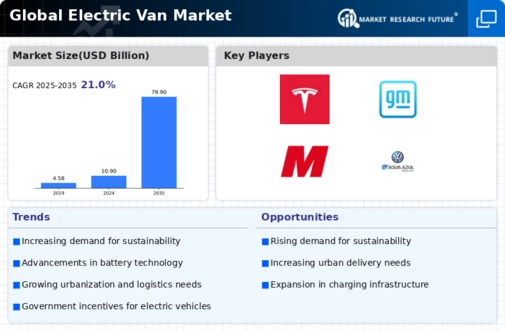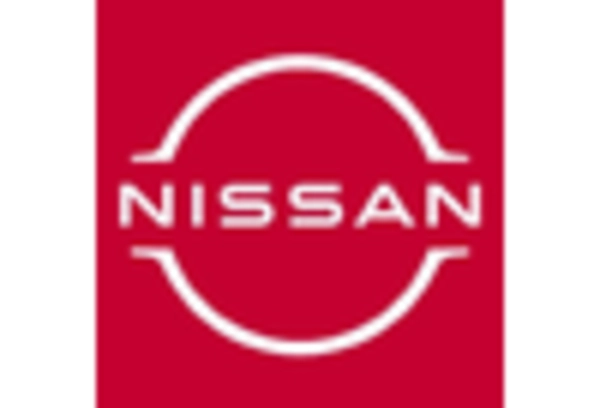Electric Van Market Summary
As per MRFR analysis, the Electric Van Market Size was estimated at 11.86 USD Billion in 2024. The Electric Van industry is projected to grow from 14.35 USD Billion in 2025 to 96.54 USD Billion by 2035, exhibiting a compound annual growth rate (CAGR) of 21.0 during the forecast period 2025 - 2035.
Key Market Trends & Highlights
The Electric Van Market is poised for substantial growth driven by sustainability and technological advancements.
- North America remains the largest market for electric vans, reflecting a strong shift towards sustainable transportation.
- Asia-Pacific is emerging as the fastest-growing region, propelled by increasing urbanization and e-commerce demands.
- Battery Electric Vehicles dominate the market, while Hybrid Electric Vehicles are experiencing rapid growth due to their versatility.
- Rising demand for sustainable transportation and government incentives are key drivers fueling the expansion of electric vans.
Market Size & Forecast
| 2024 Market Size | 11.86 (USD Billion) |
| 2035 Market Size | 96.54 (USD Billion) |
| CAGR (2025 - 2035) | 21.0% |
Major Players
Mercedes-Benz (DE), Ford (US), Volkswagen (DE), Nissan (JP), Renault (FR), Peugeot (FR), BYD (CN), Rivian (US), Arrival (GB)


















Leave a Comment